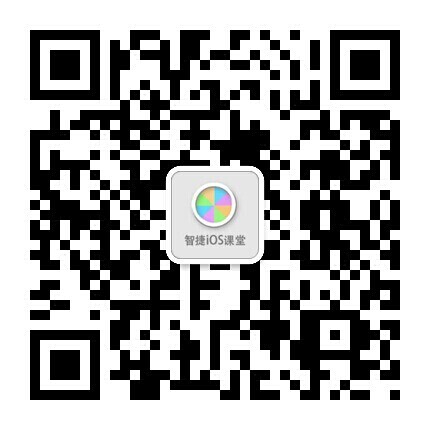标签:style blog http color io os ar strong 文件
内置的11粒子系统说明如下:
ParticleExplosion。爆炸粒子效果,属于半径模式。
ParticleFire。火焰粒子效果,属于重力径模式。
ParticleFireworks。烟花粒子效果,属于重力模式。
ParticleFlower。花粒子效果,属于重力模式。
ParticleGalaxy。星系粒子效果,属于半径模式。
ParticleMeteor。流星粒子效果,属于重力模式。
ParticleSpiral。漩涡粒子效果,属于半径模式。
ParticleSnow。雪粒子效果,属于重力模式。
ParticleSmoke。烟粒子效果,属于重力模式。
ParticleSun。太阳粒子效果,属于重力模式。
ParticleRain。雨粒子效果,属于重力模式。
这11种粒子系统每一个都有如下两个create函数,通过create函数可以创建粒子对象。
static ParticleExplosion * create ()
static ParticleExplosion * createWithTotalParticles (int numberOfParticles)
其中createWithTotalParticles 函数中的numberOfParticles是粒子的初始化个数。
还有这11种粒子的属性,根据它的发射模式不同也会有所不同。
下面我们通过一个实例演示一下这11种内置粒子系统。这个实例如图所示,左图是一个操作菜单场景,选择菜单可以进入到上图动作场景,在下图动作场景中演示选择的粒子系统效果,点击右下角返回按钮可以返回到菜单场景。

下面我们再看看具体的程序代码,首先看一下看HelloWorldScene.h文件,它的代码如下:
[html] view plaincopy
#ifndef __HELLOWORLD_SCENE_H__
#define __HELLOWORLD_SCENE_H__
#include "cocos2d.h"
#include "MyActionScene.h"
typedef enum ①
{
kExplosion = 1
,kFire
,kFireworks
,kFlower
,kGalaxy
,kMeteor
,kRain
,kSmoke
,kSnow
,kSpiral
,kSun
} ActionTypes; ②
class HelloWorld : public cocos2d::Layer
{
public:
static cocos2d::Scene* createScene();
virtual bool init();
void OnClickMenu(cocos2d::Ref* pSender);
CREATE_FUNC(HelloWorld);
};
#endif // __HELLOWORLD_SCENE_H__
上述代码第①~②是定义个枚举类型ActionTypes,枚举类型ActionTypes中定义了11个常量,这11个常量对应11个菜单项。
下面我们再看看下一个场景MyActionScene,它的MyActionScene.h代码如下:
[html] view plaincopy
#ifndef __MYACTION_SCENE_H__
#define __MYACTION_SCENE_H__
#include "cocos2d.h"
#include "HelloWorldScene.h"
class MyAction : public cocos2d::Layer
{
cocos2d::LabelBMFont* pLabel; ①
public:
static cocos2d::Scene* createScene();
virtual bool init();
virtual void onEnterTransitionDidFinish(); ②
CREATE_FUNC(MyAction);
void backMenu (cocos2d::Ref* pSender); ③
};
#endif // __MYACTION_SCENE_H__
在头文件中第①行代码定义了LabelBMFont成员变量,用来在场景中显示粒子系统的名称。第②行代码声明了onEnterTransitionDidFinish回调函数,该函数是重写父类函数,它将在场景出现后回掉。第③行代码是声明了一个返回菜单点击的回调函数。
MyActionScene的实现代码MyActionScene.ccp文件,它的主要代码如下:
[html] view plaincopy
bool MyAction::init()
{
if ( !Layer::init() )
{
return false;
}
Size visibleSize = Director::getInstance()->getVisibleSize();
auto pItmLabel = Label::createWithBMFont("fonts/fnt8.fnt", "<Back");
auto backMenuItem = MenuItemLabel::create(pItmLabel,
CC_CALLBACK_1(MyAction::backMenu, this));
backMenuItem->setPosition(Point(visibleSize.width - 100, 100));
Menu* mn = Menu::create(backMenuItem, NULL);
mn->setPosition(Point::ZERO);
this->addChild(mn);
pLabel = Label::createWithBMFont("fonts/fnt8.fnt", "");
pLabel->setPosition(Point(visibleSize.width / 2, visibleSize.height - 50));
this->addChild(pLabel, 3);
return true;
}
void MyAction::onEnterTransitionDidFinish()
{
Layer::onEnterTransitionDidFinish();
ParticleSystem* system;
switch (this->getTag()) { ①
case kExplosion:
system = ParticleExplosion::create();
pLabel->setString("Explosion ");
break;
case kFire:
system = ParticleFire::create();
pLabel->setString("Fire");
break;
case kFireworks:
system = ParticleFireworks::create();
pLabel->setString("Fireworks");
break;
case kFlower:
system = ParticleFlower::create();
pLabel->setString("Flower");
break;
case kGalaxy:
system = ParticleGalaxy::create();
pLabel->setString("Galaxy");
break;
case kMeteor:
system = ParticleMeteor::create();
pLabel->setString("Meteor");
break;
case kRain:
system = ParticleRain::create();
pLabel->setString("Rain");
break;
case kSmoke:
system = ParticleSmoke::create();
pLabel->setString("Smoke");
break;
case kSnow:
system = ParticleSnow::create();
pLabel->setString("Snow");
break;
case kSpiral:
system = ParticleSpiral::create();
pLabel->setString("Spiral");
break;
case kSun:
system = ParticleSun::create(); ②
pLabel->setString("Sun");
break;
}
Size visibleSize = Director::getInstance()->getVisibleSize();
system->setPosition(Point(visibleSize.width / 2, visibleSize.height / 2));
this->addChild(system);
}
我们在MyAction::init()函数中初始化场景,在MyAction::onEnterTransitionDidFinish ()函数中创建粒子系统对象,而不是在MyAction::onEnter()函数创建,这是因为MyAction::onEnter()函数调用时候,场景还没有显示,如果在该函数中创建爆炸等显示一次的粒子系统,等到场景显示的时候,爆炸已经结束了,我们会看不到效果。
代码第①~②行创建了11种粒子系统,这里创建粒子系统时候都采用了它们的默认属性值。其中他pLabel->setString("xxx")函数是为场景中标签设置内容,这样在进入场景后可以看到粒子系统的名称。
更多内容请关注国内第一本Swift图书《Swift开发指南》
本书交流讨论网站:http://www.51work6.com/swift.php
欢迎加入Swift技术讨论群:362298485
欢迎关注智捷iOS课堂微信公共平台

标签:style blog http color io os ar strong 文件
原文地址:http://my.oschina.net/u/1410370/blog/313328